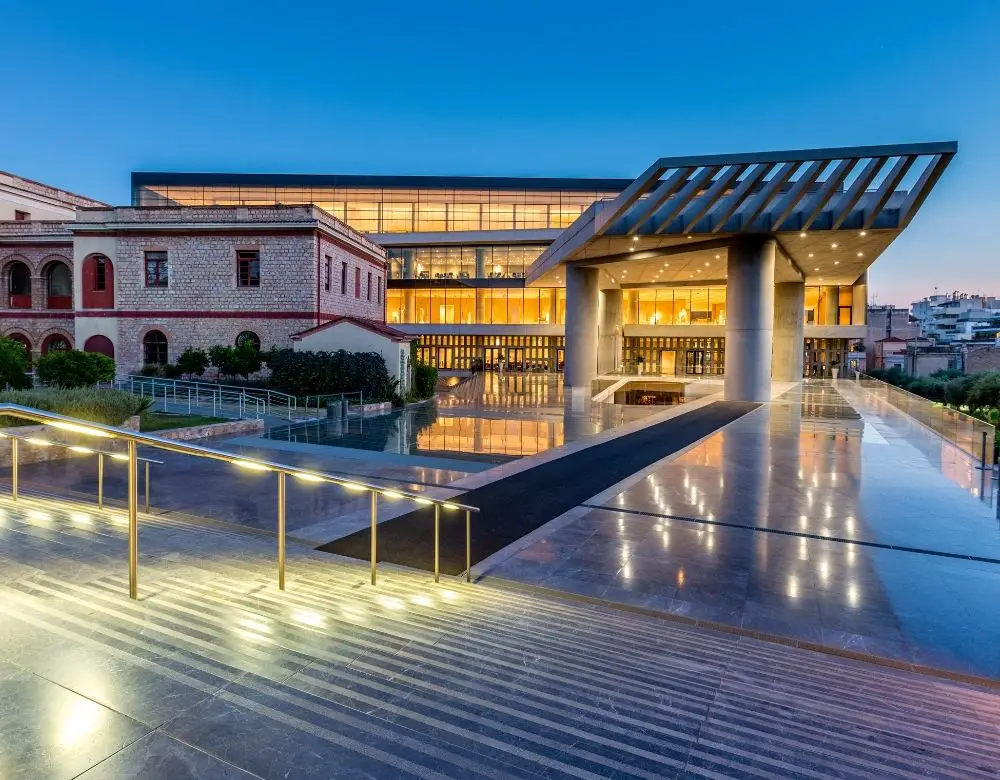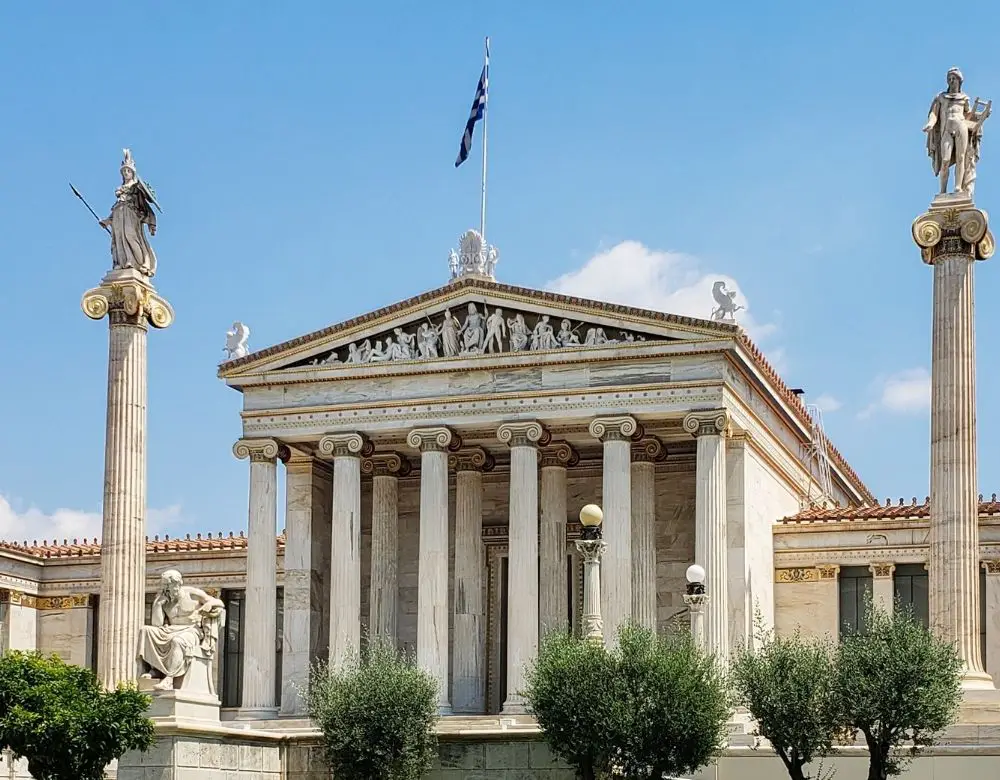



Whether you are spending two days in Athens or two weeks, you are spoilt for choice. From ancient sites, world-class museums and rainy day activities (for those visiting Athens in winter) you will have no shortage of things to do in the capital. With all these reasons to visit, you are no doubt convinced that this is something you need to do. But how do you narrow it down? The major landmarks in Athens include some of the most important archaeological sites as well as monuments, museums and buildings and it is the perfect place to start. So, let’s dive in.
The Acropolis
Overlooking the city lies the Acropolis. Home to the Parthenon this rocky outcrop is probably the most important landmark in Athens. The Parthenon and its other ancient ruins glow brightly in the evenings and are a prominent reminder of this city’s rich history. Completed over 2,000 years ago in 432 BC the Acropolis has seen everything from wars, sieges and it’s even endured explosions. If you are ticking off landmarks, this should be the first on your list!




Odeon of Herodes Atticus
On the slopes of the Acropolis lies another special landmark in Athens. The Odeon of Herodes Atticus, which is a Roman style amphitheatre, was built by the philosopher Herodes Atticus for his late wife. For the lovers of theatre, you can sit on its marble seats and enjoy the opera, or whatever events are on at the time. The acoustics of the theatre means that no microphones are necessary, and it is amazing to see such an ancient construction still in action.
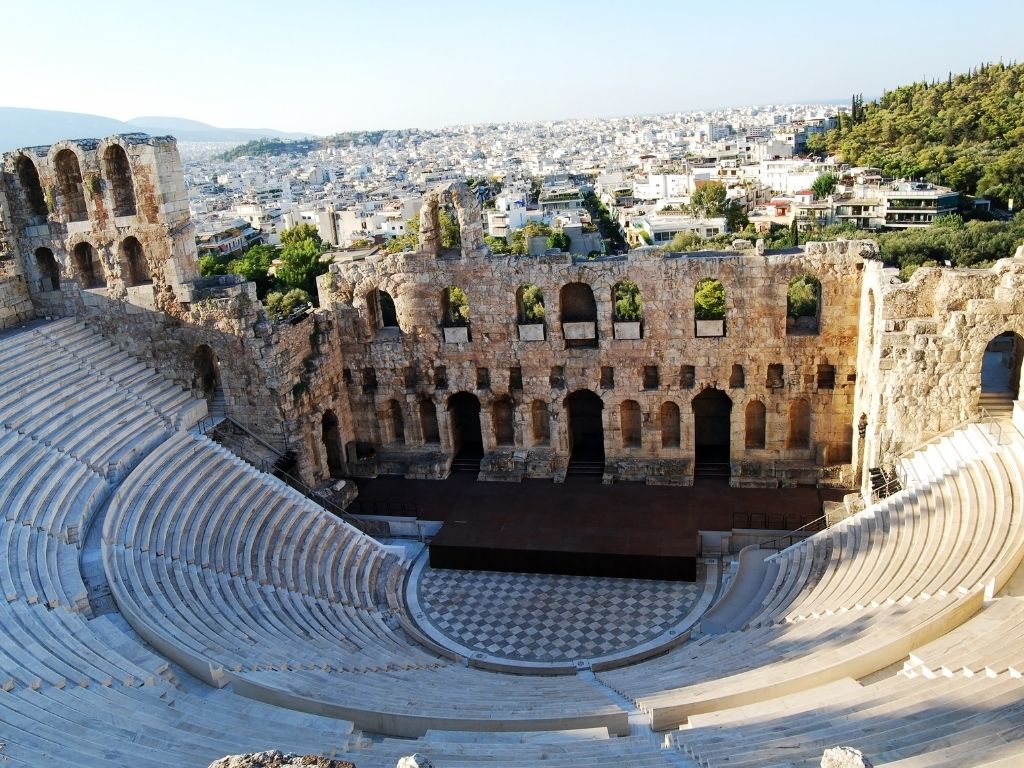



The Acropolis Museum
This landmark in Athens is the perfect accompaniment to visiting the Acropolis. The Acropolis Museum sits at the bottom of its slopes on Dionysiou Areopagitou Street. While many remnants of the Acropolis and the Parthenon are missing, they can be found within this museum’s walls. The building itself is a masterpiece. Constructed in 2009, it mimics that of its ancient neighbour, held up by colossal columns. With floor to ceiling glass windows each floor is bathed in natural light, offering a sun-soaked lens to its 3,000 artefacts. While there are a number of renowned museums in Athens, this is a landmark that cannot be missed!
☞ Related: You can get tickets to the Acropolis Museum here




The Agora
In Greek, the word agora means “assembly place.” As far as landmarks in Athens go, this might be one of the most underrated but this doesn’t dull its importance. In ancient times the Agora was where Athenians gathered. They would come here to socialise but also go about daily life and make purchases at the stalls that lined the Stoa of Attalos. The museum inside the stoa is included when you buy your ticket for the Agora and here you can learn what day to day Athenian life was like in the time of the great Greek philosophers and trace back the roots of Athenian democracy.




Parliament
The Greek Parliament is the great building that sits opposite Syntagma square in the centre of Athens. Also known as the Old Royal Palace, the building was initially built for King Otto and completed in 1843, but since 1934 it has been home to the Hellenic Parliament. Not only is this a landmark in Athens it is also where the change of the guard occurs. At every hour outside the building the guards (Evzones) will swap shifts, watching the Evzones in their traditional dress has become a popular tourist attraction.




Athens Trilogy
Just down the road from Syntagma square is the Trilogy of Athens. The three neighbouring buildings have become one of the most important academic landmarks in Athens. The Trilogy consists of the Academy, the National Library and the University of Athens. These three buildings can be found on Panepistimiou Street and offer a fantastic view of the neoclassical architecture eminent of the mid 19th century.




Panathenaic Stadium
The Panathenaic Stadium in Athens (Kallimarmaro) is the only stadium in the world made entirely out of marble, making it one of the most unique landmarks in Athens. The stadium resides on the same historical site in which the Panathenaic games were once held. It was reconstructed in 1896 and hosted the first of the modern Olympic Games. Nowadays the stadium, with a capacity of 50,000 people is host to both sporting events and concerts. The stadium is close to the National Gardens, which is a lovely green escape in the heart of the city.
☞ Related: Olympia: Home Of The Ancient Olympics




Ermou Street
Opposite Syntagma square is the beginning of one of the most well known streets in the capital. So well known, it has become another of the many landmarks in Athens. As you walk down Ermou Street you’ll pass street food vendors selling corn on the cob and chestnuts as well as high end stores. Stretching for over a kilometre this pedestrian only promenade is home to one of the oldest churches in the city, Panagia Kapnikarea. Visit a bakery and try some traditional food or deviate down one of its many side streets. This is the perfect adventure for the happy wanderer.
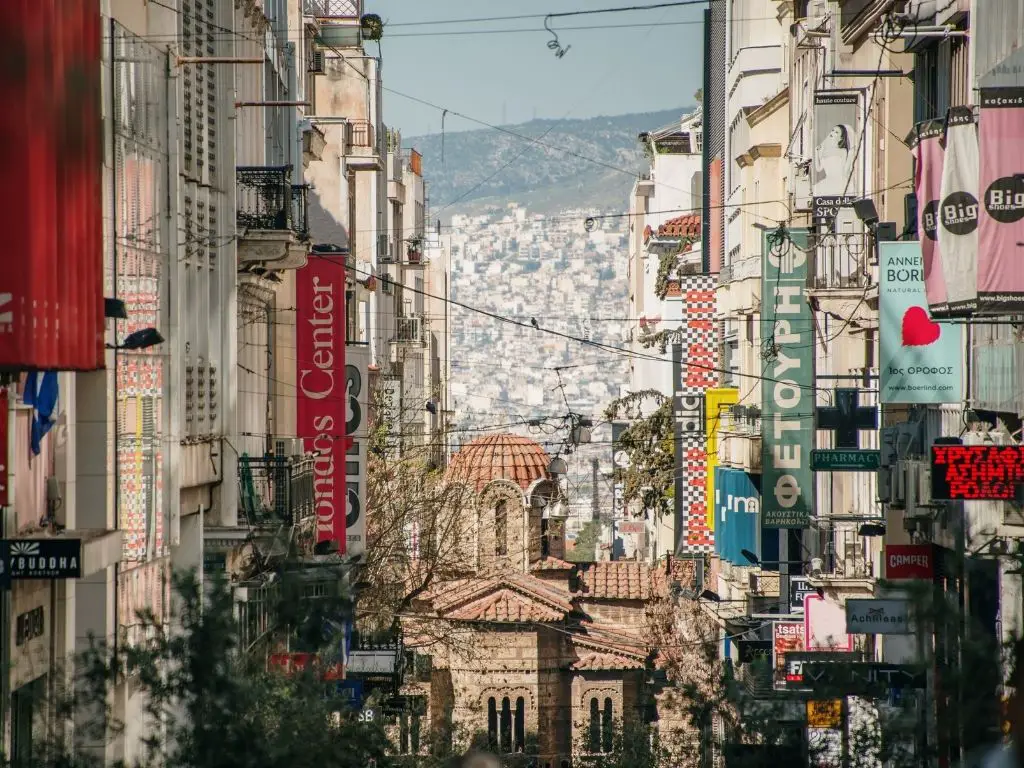



Mount Lycabettus
Of all the landmarks in Athens, none offer views like that of Lycabettus. It sits on the skyline of the city and is one of the 7 hills of Athens. The walk to its summit, although a steep incline, is well worth the hike. From the top, you have 360 views of the Acropolis and the city. Many people climb up here to watch the sunset, so make sure you head up early to get a good spot. Atop Mount Lycabettus is a quaint little church that’s open doors and candles beckon you inside. It is a peaceful spot with stunning vistas and is a must-do for those wanting to explore the best places in Athens.
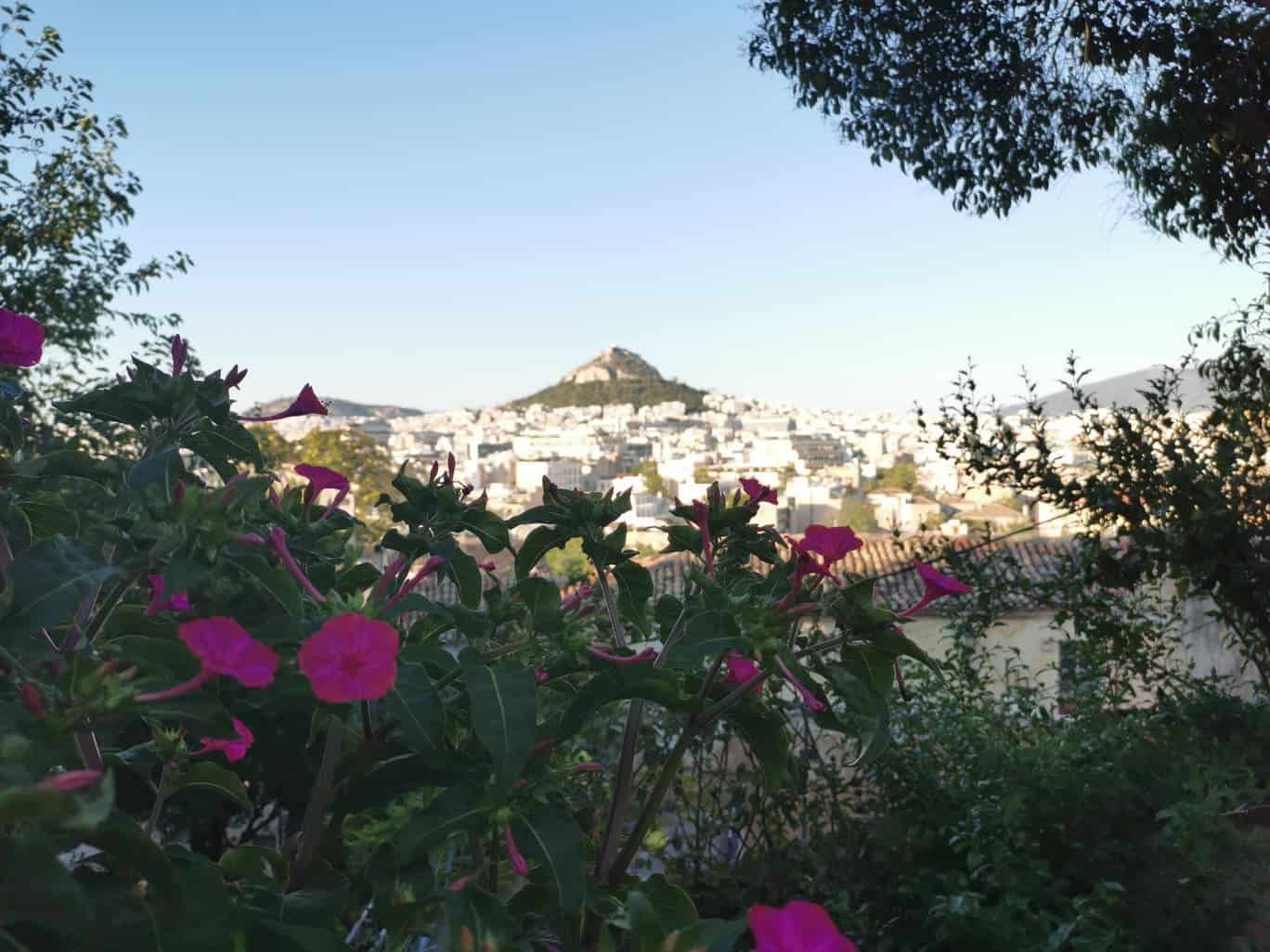



Anafiotika
Nestled under the Acropolis is an island oasis in the heart of the city. The district of Anafiotika has an interesting back story. The whitewashed buildings with splashings of colour, shuttered windows and cobbled alleys might remind you of something. If you are thinking it’s reminiscent of the Greek islands, then you are right! Many of the early settlers that set themselves up here in the 1800s came from the island of Anafi. “Anafiotika” literally means little Anafi and the carpenters and builders who came to this district built houses that were replicas of their own back home. When you explore its quaint streets you will see why it makes the list of landmarks in Athens.





